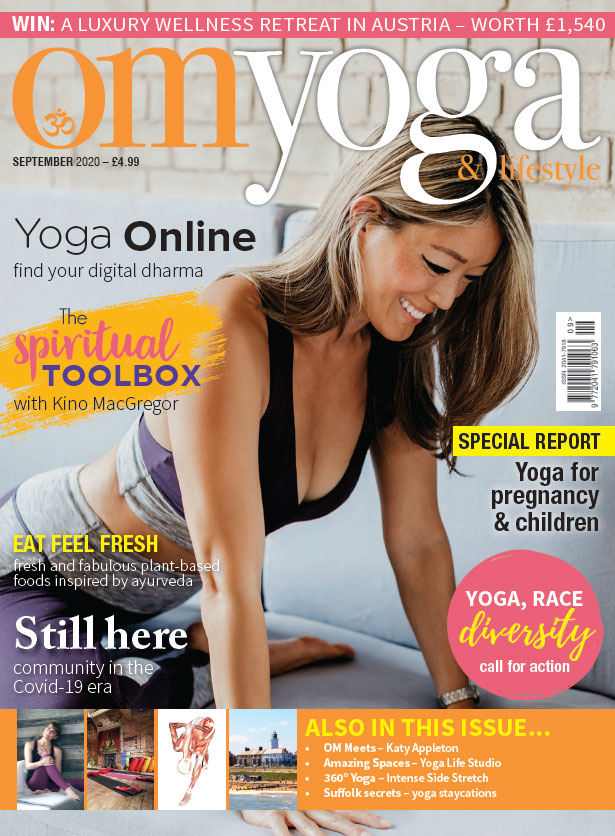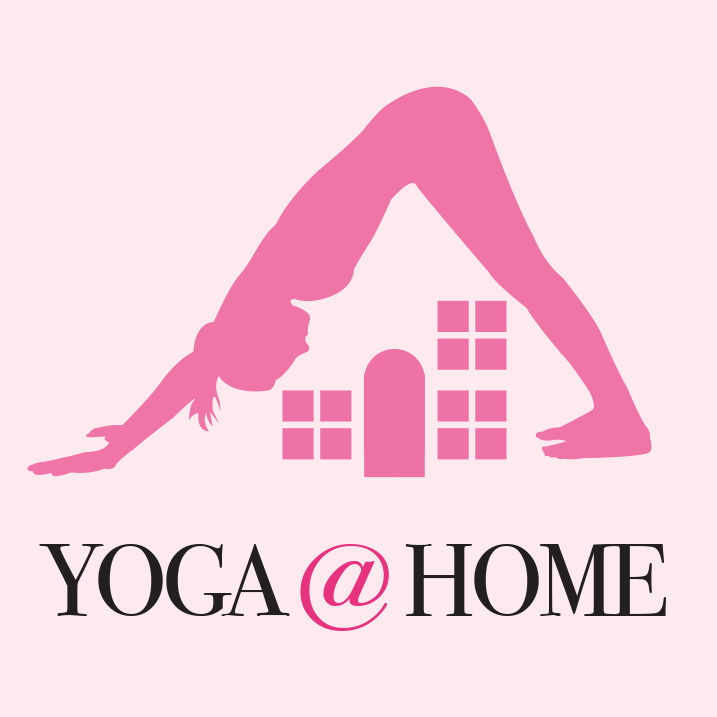
Love those backbends.
A back-bending progression with Angelique Sandas
Backbends can be invigorating and freeing. They can also be intense and intimidating. This progression leads the body gradually deeper into the arch of backbends while establishing a pattern of supportive technique so that they can be an exciting and safe experience on your mat. It is essential to maintain a steady breath while working with backbends. This will help to regulate the intensity in the nervous system and give you signals as to when you may be doing too much. If the breath becomes strained, ease up.
Through this back-bending sequence, we cultivate awareness of movement in the upper back, lower back, and hips as well as how the legs participate. In each posture, bring attention to the support from the front body, drawing the low belly muscles back towards the spine and allowing space as you bend. Practice this sequence and watch back bending become one of your favourite experiences on the yoga mat
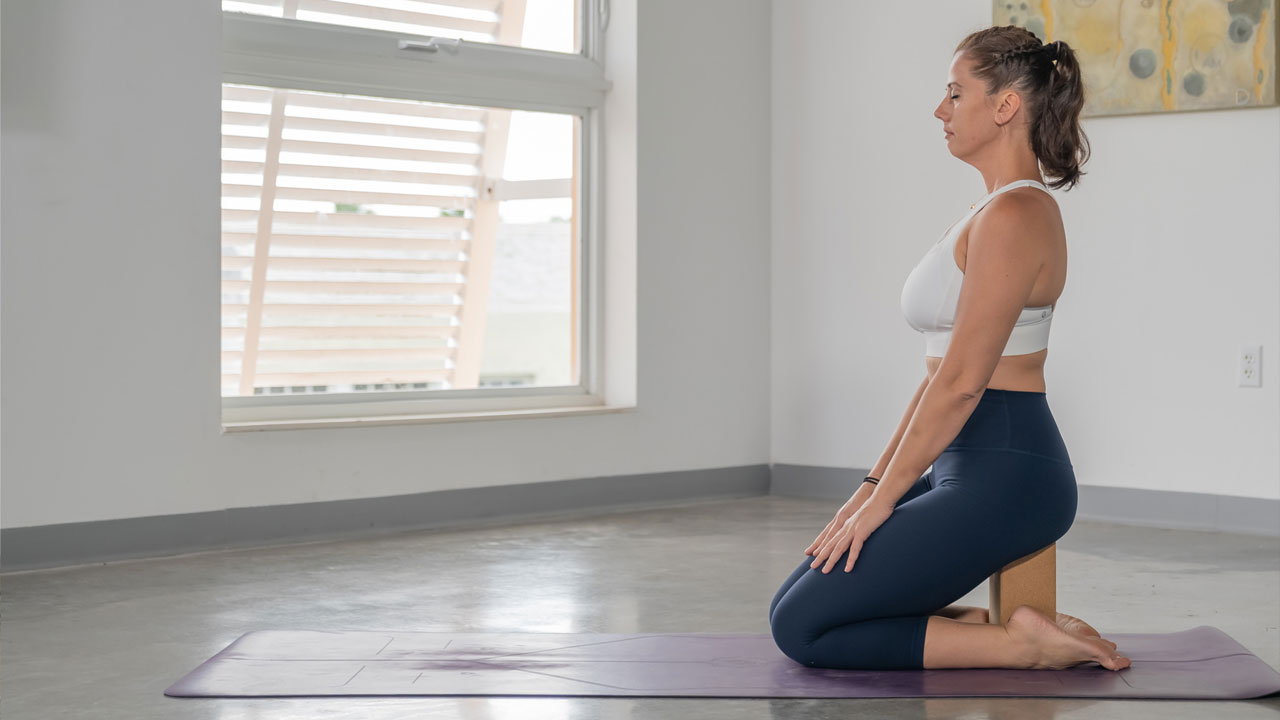
1. Kneeled Breathing (modification)
Knees together, sit on your heels. Hands rest on your legs. Eyes gently closed. Breathe through the nose, evenly, freely, deeply. Check-in, establish the pace and rhythm of your breath.
Modify: If necessary, use a prop to lift the seat to ease the pressure through the knees and ankles.
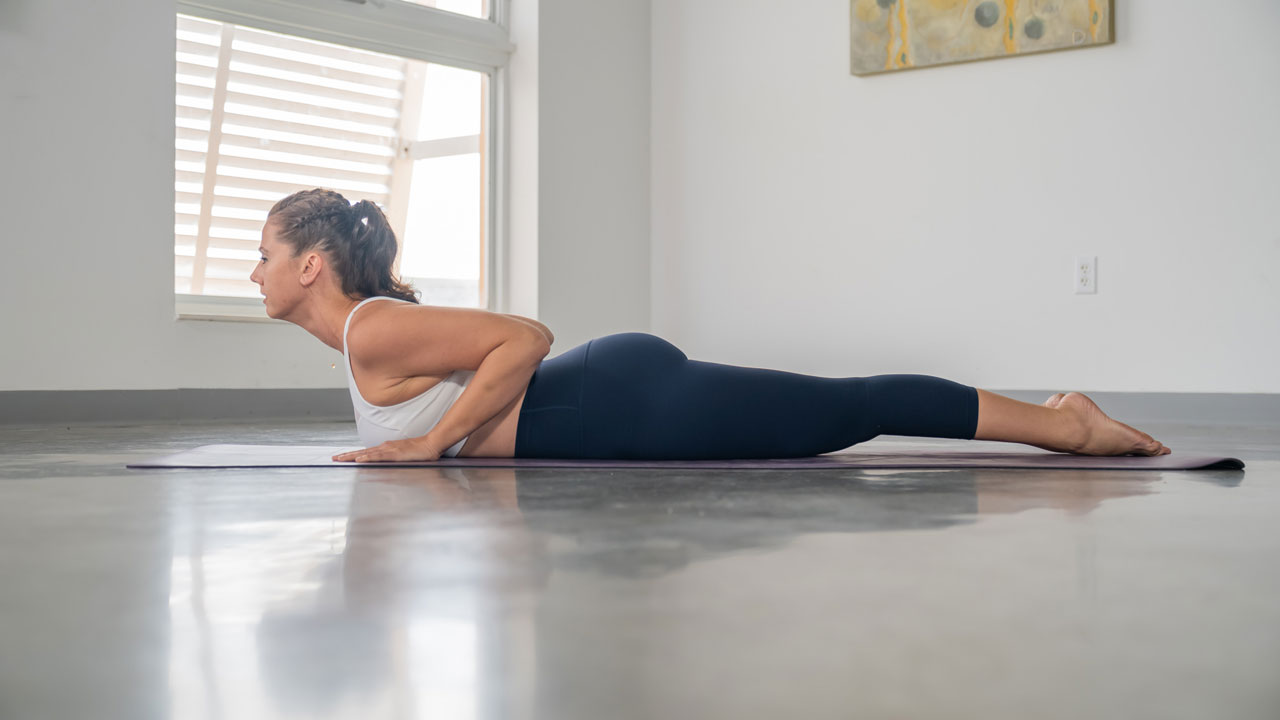
2. Cobra Pose (Bhujangasana)
From here, pull the femur-head of your front leg into your hip socket as you bend the front knee. Be sure that you keep the belly hugging in toward the spine, and then reach the fingertips up toward the ceiling, palms touching. At the same time, lift your gaze. The whole body strong, every muscle working. Hold here for several rounds of deep, continuous breath, then step back to Samasthiti. When you’re ready, move to the other side.
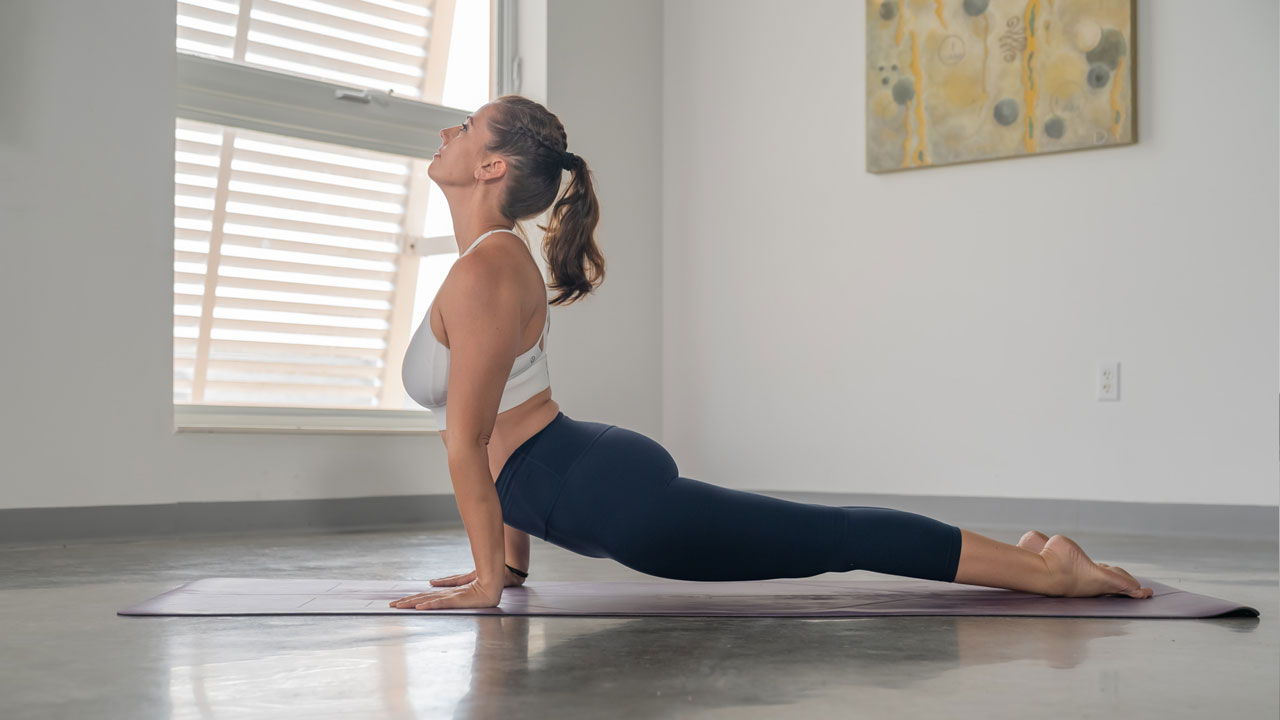
3. Upward Dog Pose (Urdhva Mukha Svanasana)
Begin lying on the belly. Legs straight, feet together, toes pointed. Hands placed at mid-ribs. Draw low belly muscles into spine, lengthen low back. Arms press straight. Shoulders draw back, broadening the collarbone area. Press the floor away, drawing the head up out of the shoulders, neck long. Chin lifts, gaze down nose. Lift the knees by pressing the tops of the feet against the floor, engaging the quadriceps (front thighs).
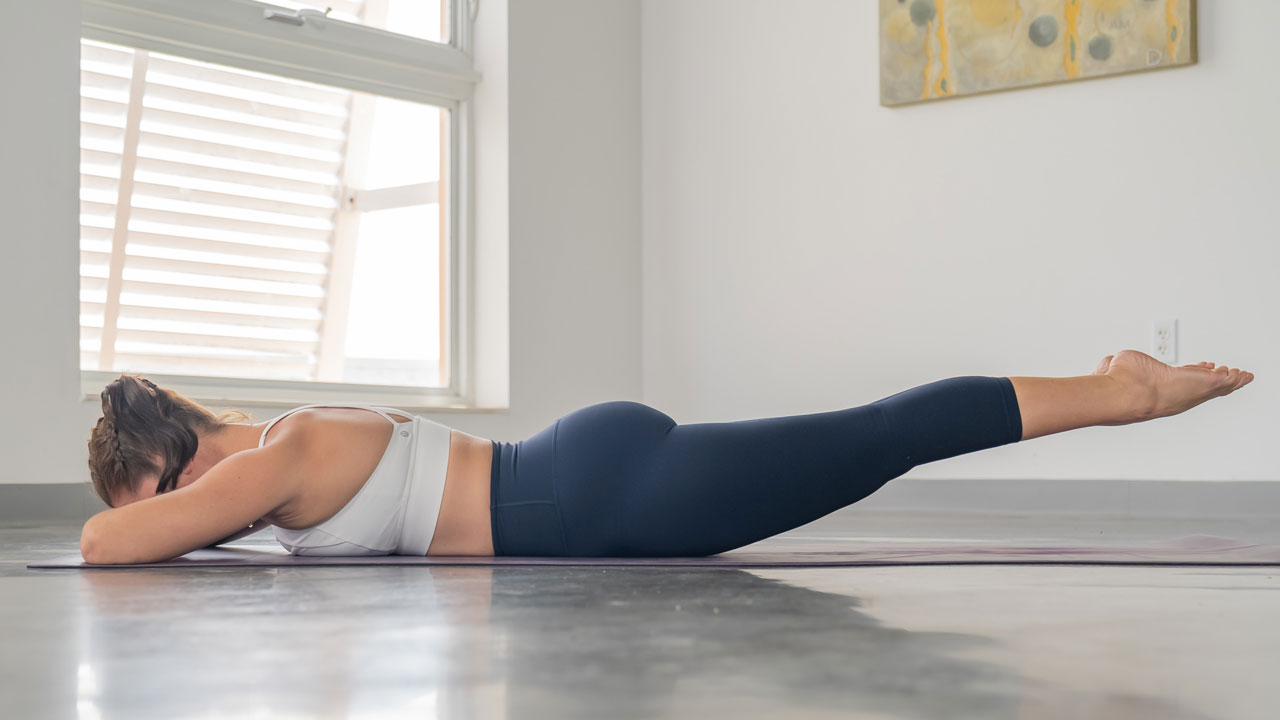
4. Locust Pose (modification) (Salabhasana)
Begin lying on the belly. Legs straight, feet together, toes pointed. Hands under shoulders, elbows back. Draw low belly muscles in to spine, lengthen low back. Inhale lift the legs away from the floor, keeping them straight. At the same time, send the heart forward and up, lift your chin, gaze down the nose, gently push through the hands.
Modify: If necessary, lift only the legs, allowing the head to rest on folded hands.
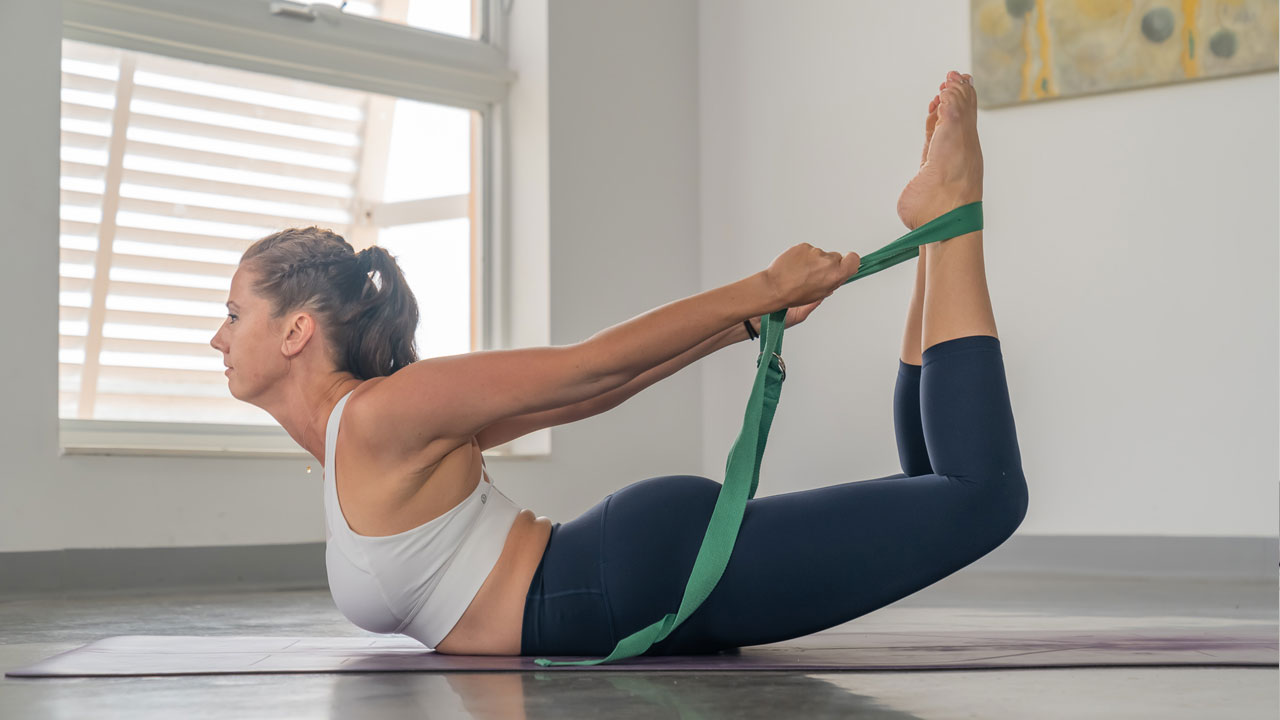
5. Bow Pose (modification) (Dhanurasana)
Begin lying on the belly. Bending the knees, reach the hands back to grasp the ankles, keep shoulders down. Draw low belly muscles in to spine, lengthen low back. Inhale, send the heart forward and up, lift your chin, gaze down the nose. At the same time, kick your feet into your hands and up towards the ceiling. Quadriceps engage strongly.
Modify: If necessary, use a strap or towel around the ankles to grasp with hands rather than ankles
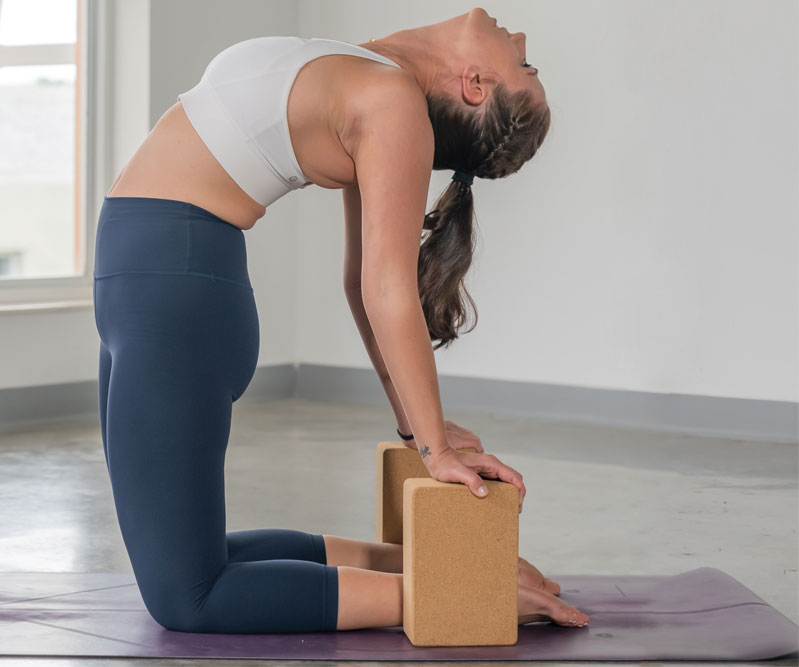
6. Camel Pose (modification) (Ustrasana)
Kneeling with knees at hips distance apart. Draw low belly muscles in to spine, lengthen low back. Reach hands back to heels, press downward, keep shoulders down (away from ears), broaden collarbone area. Keep the hips pressing forward over the knees. Release the head back.
Modify: If necessary use blocks placed outside of the ankles, bring hands to press against the blocks.



